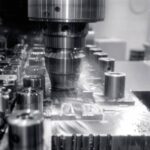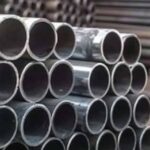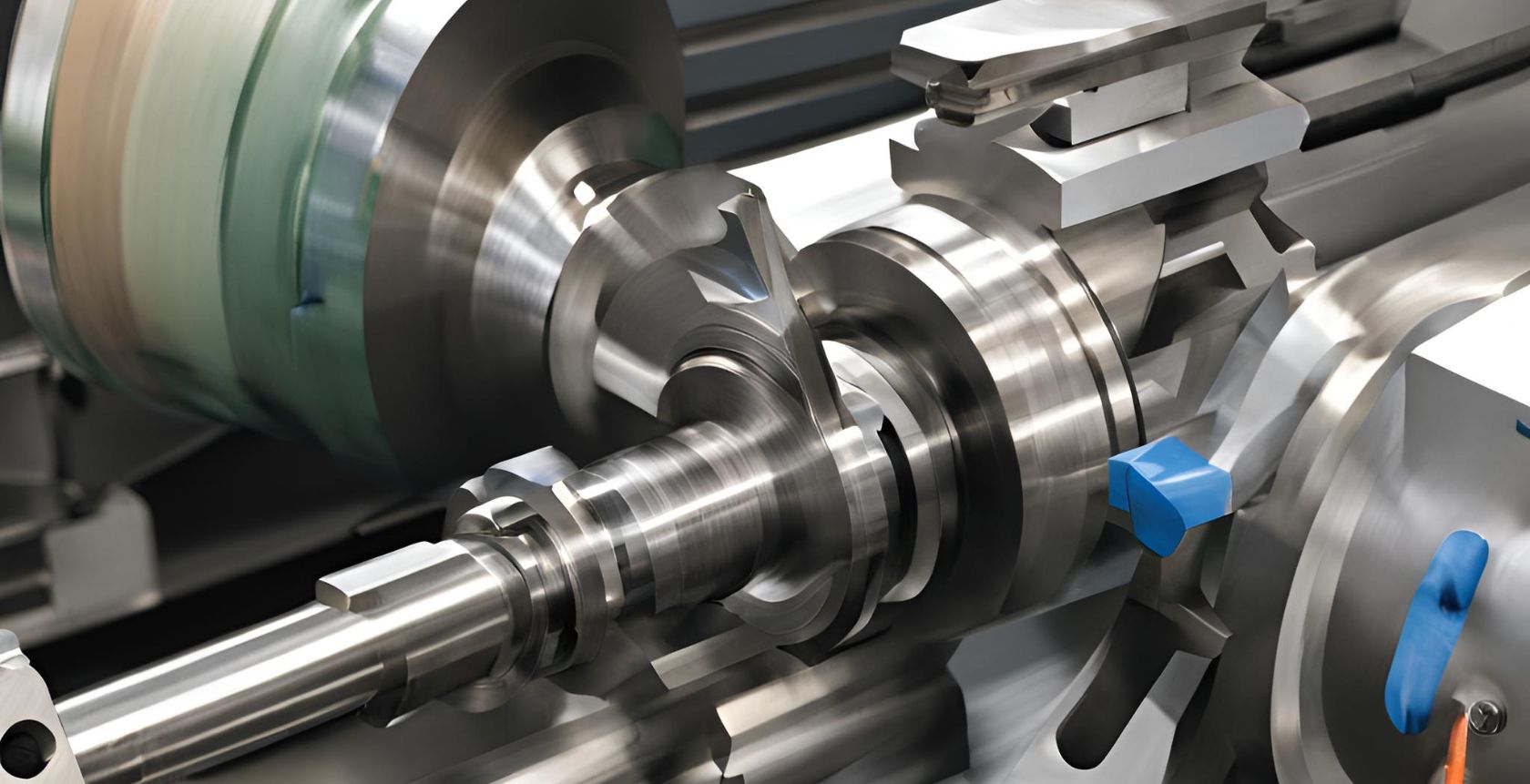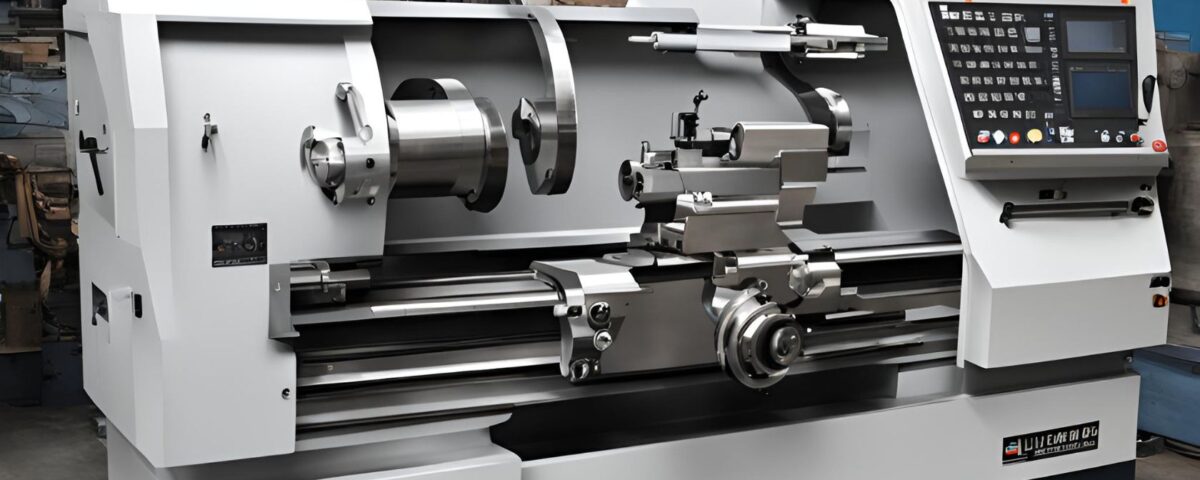
Thin-Walled Titanium Parts: Overcoming Processing Hurdles
30 May 2024
Analyzing Performance Differences of Q345 Steel Grades: A to E
4 June 2024How CNC Lathe Machines Work
As someone deeply embedded in the world of CNC machining, I have come to appreciate the intricate mechanics and advanced technology that drive CNC lathe machines. At Worthy Hardware, we specialize in providing top-notch CNC machining parts, and understanding the workings of CNC lathe machines is fundamental to delivering high-quality products. In this blog post, I will take you through the essential aspects of CNC lathe machines, from their core components to their operational principles and applications in various industries.
The Basics of CNC Lathe Machines
CNC (Computer Numerical Control) lathe machines are pivotal in modern manufacturing, transforming how we produce complex and precise components. These machines combine traditional lathe machining principles with advanced computer technology, offering unmatched accuracy, efficiency, and versatility.
At their core, CNC lathe machines are automated lathes controlled by computer systems. They are designed to perform various operations such as cutting, drilling, facing, and turning on a workpiece, typically cylindrical. The primary function of a CNC lathe is to remove material from the workpiece to achieve the desired shape and dimensions, a process known as subtractive manufacturing. This method gradually chips away material to produce the final product.
Key Components of CNC Lathe Machines
CNC lathe machines consist of several essential components that work together to achieve precision machining:
-
Headstock: The headstock houses the spindle, which holds and rotates the workpiece. It also contains the drive mechanism that powers the spindle's rotation, ensuring the workpiece is securely held and precisely rotated for machining operations.
-
Tailstock: Opposite the headstock, the tailstock provides additional support to the workpiece, especially for longer pieces. It can also hold tools for drilling or reaming operations.
-
Carriage: The carriage is a moving platform that holds the cutting tool. It moves along the bed of the lathe, either manually or automatically, to shape the workpiece. The carriage's movement is controlled by the CNC system, ensuring precise and consistent cuts.
-
Bed: The bed is the foundation of the lathe, providing stability and support for the entire machine. It ensures that the headstock, tailstock, and carriage are perfectly aligned for accurate machining.
-
Control Panel: The control panel is the interface between the operator and the CNC system. It allows the operator to input commands, set parameters, and monitor the machining process. Modern control panels are user-friendly, often featuring touchscreens and graphical interfaces.
-
Tool Turret: The tool turret holds multiple cutting tools, allowing the machine to switch between different tools automatically. This feature is essential for performing complex operations without manual intervention.

How CNC Lathe Machines Operate
CNC lathe machines operate through a series of programmed instructions, known as G-codes and M-codes. These codes dictate the machine's movements, spindle speed, feed rate of the cutting tool, and other critical parameters. The process begins with designing the part using Computer-Aided Design (CAD) software. Once the design is complete, it is translated into a series of G-codes using Computer-Aided Manufacturing (CAM) software, which are then loaded into the CNC machine's control unit.
| Step | Description |
|---|---|
| Setup | Securing the workpiece in the spindle and loading the necessary cutting tools into the tool turret. Setting parameters like spindle speed, feed rate, and cutting depth. |
| Programming | Loading the CNC program, consisting of G-codes and M-codes, into the control unit. This program dictates the machine's movements and operations. |
| Machining | The spindle rotates the workpiece while the carriage moves the cutting tool according to the programmed instructions. The tool removes material from the workpiece, shaping it into the desired form. |
| Monitoring | Throughout the machining process, the operator monitors the machine's performance and makes adjustments if necessary. Modern CNC lathe machines are equipped with sensors and feedback systems to ensure precision and detect anomalies. |
| Finishing | After the initial machining operations, the workpiece may undergo additional processes such as polishing, deburring, or coating to achieve the final finish. |
Applications of CNC Lathe Machines
CNC lathe machines are widely used across various industries due to their versatility and precision:
Aerospace
In the aerospace industry, CNC lathe machines are used to produce critical components such as turbine blades, engine parts, and structural components. The high precision and repeatability of CNC machining ensure that these parts meet stringent quality standards.
Automotive
The automotive industry relies on CNC lathe machines for manufacturing engine components, transmission parts, and intricate metal components. CNC machining allows for the production of complex shapes and geometries with tight tolerances.
Medical
CNC lathe machines play a vital role in the medical field by producing surgical instruments, implants, and prosthetics. The ability to machine biocompatible materials with high precision is essential for creating reliable and safe medical devices.
Electronics
The electronics industry uses CNC lathe machines to manufacture components such as connectors, housings, and heat sinks. CNC machining ensures that these parts meet the required specifications and fit precisely within electronic devices.
Industrial Machinery
CNC lathe machines are employed in the production of various industrial machinery components, including shafts, gears, and couplings. The ability to handle large and heavy workpieces makes CNC lathes suitable for heavy-duty applications.

Advantages of CNC Lathe Machines
The adoption of CNC lathe machines offers numerous advantages over traditional manual machining methods:
Precision and Accuracy
CNC lathe machines are capable of achieving extremely high levels of precision and accuracy. The computer-controlled movements ensure consistent and repeatable results, reducing the risk of human error.
Efficiency
CNC machining significantly reduces production time by automating various operations. Once the program is set, the machine can operate continuously, producing parts with minimal downtime.
Complexity
CNC lathe machines can perform intricate and complex machining operations that would be challenging or impossible with manual methods. This capability allows for the creation of sophisticated geometries and detailed designs.
Consistency
CNC machines produce parts with consistent quality, ensuring that each piece meets the required specifications. This consistency is crucial for industries where precision and reliability are paramount.
Flexibility
CNC lathe machines can be easily reprogrammed to produce different parts, making them highly versatile. This flexibility is beneficial for manufacturers who need to switch between different products or customize designs.
Safety
CNC lathe machines reduce the risk of accidents and injuries associated with manual machining. The operator's involvement is minimized, and the machine operates within enclosed workspaces, protecting both the operator and the workpiece.
The Future of CNC Lathe Machines
As technology continues to advance, the capabilities of CNC lathe machines are expected to expand further. Innovations in automation, artificial intelligence, and machine learning are likely to enhance the precision, efficiency, and versatility of CNC machining even more. Additionally, the integration of smart manufacturing technologies, such as the Internet of Things (IoT) and real-time data analytics, will provide greater insights into machine performance and optimize the production process.
At Worthy Hardware, we are committed to staying at the forefront of these technological advancements. Our dedication to quality and precision ensures that we can meet the evolving demands of our customers in various industries. By continuously investing in state-of-the-art CNC lathe machines and adopting cutting-edge manufacturing techniques, we aim to deliver superior CNC machining parts that meet the highest standards of excellence.
Understanding how CNC lathe machines work reveals their significance in modern manufacturing. These machines combine the principles of traditional lathe machining with advanced computer technology to offer unmatched precision, efficiency, and versatility. By automating the machining process, CNC lathe machines have transformed various industries, enabling the production of complex and high-quality components. From aerospace to medical, CNC lathe machines continue to play a crucial role in driving innovation and meeting the demands of modern manufacturing. As technology advances, the capabilities of CNC lathe machines are expected to expand further, opening up new possibilities and applications in the world of precision machining.




